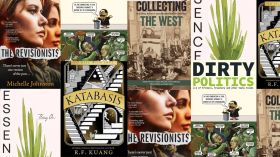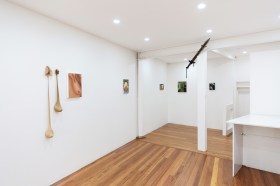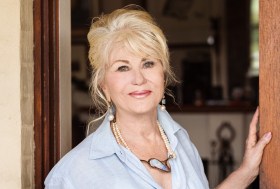As lockdowns and cancellations continue to force industry-wide rethinks of the ways that we plan our work, some of our favourite thinkers have been working hard on research that offers detailed, expert insights into the crisis across the arts and cultural sector – and what we can do about it.
New work such as UniSA CP3’s Keeping Creative, and the Australia Institute’s Creativity in Crisis, have landed just in time to stimulate good collaborations as we head into the budget planning and pre-election cycles.
So how do we transform that feeling of crisis into constructive advocacy that creates change?
Let’s take a look at what each of these reports offers.
Keeping Creative is the UniSA CP3 (Creative People, Products and Places) report on Assessing the Impact of the COVID-19 Emergency on the Art and Cultural Sector & Responses to it by Governments, Cultural Agencies and the Sector. Drs Jessica Pacella, Susan Luckman and Justin O’Connor began the Keeping Creative research project in April last year: ‘tracking policy responses through news media, government announcements, reports, open letters, and academic papers’ throughout 2020.
The result is a comprehensive analysis with timelines, state-by-state breakdowns, and valuable overseas comparisons, benchmarking the various government responses to our advocacy against the resulting policy efficacy, as well as international responses that present the Australian Government as ‘a global outlier’.
There’s also a valuable arguments to refresh our advocacy on precarious employment, portfolio careers, and how ‘a more precise understanding of the sub-sectors that comprise the artistic workforce (particularly the actual numbers of freelance, casual and gig-work employed)’ can lead to better policy responses.
The authors stress the imperative that if the arts and culture sector is to improve its advocacy, it will be ‘necessary to situate itself in this new economic, social and political landscape’ and not limit itself to economic arguments. It’s a powerful position, claiming our role as being central to nation-building role at this critical time.
Complementing this report is Creativity in Crisis, from the Centre for Future of Work at the Australia Institute, on Rebooting Australia’s Arts and Entertainment Sector After COVID. Published in July, this report by Alison Pennington and Dr Ben Eltham was commissioned by the Media, Entertainment and Arts Alliance.
Creativity in Crisis presents a comprehensive overview of what constitutes our sector, and how public investment has not kept pace with industry growth and diversification, nor global benchmarks. In response, ‘a complete reboot of the arts and entertainment sector’ is the authors’ recommendation, with an entirely new policy model that ‘puts the public at the centre of the policy discussion.’
Proposals that strengthen the conditions in which art is made, shared and discussed, as well as strengthening public interest journalism and all broadcasting and streaming platforms, position Creativity in Crisis as a comprehensive civic contributor. This is research-led policy that can transform a nation.
All of this is the kind of thinking we need right now. With a Federal Election due before 21 May 2022, it’s vital that advocacy isn’t just left to overstretched peak bodies and industry service organisations. Advocacy is everyone’s responsibility – and the moment the election is called, we need to be ready to speak to the public.
There’s no shortage of data – there never has been. Our challenge is to use that data, not as static, but as part of an argument. Simply quoting the dollar value of our GDP contribution is unhelpful if a policy-maker can see it as an argument to make no change – or to invest less. Research like Creativity in Crisis and Keeping Creative sharpens our tools and broadens our thinking, just when we need it most.
Global leadership
Meanwhile, all of the culture ministers of the G20 nations met for the first time last month to make a substantial statement towards ensuring that arts and culture are central to post-pandemic action.
The Rome Declaration of the G20 Ministers of Culture – of which Australia is a member – avows as its first principle under the heading ‘Culture and Creative Sectors as Drivers for Regeneration and Sustainable and Balanced Growth’, that:
culture has an intrinsic value, is an essential component for human development and plays an essential role in fostering the resilience and the regeneration of our economies and our societies heavily affected by the COVID-19 pandemic. Culture is the foundation for relaunching prosperity, social cohesion and the well-being of people and communities.
According to this international declaration, culture is the starting point, not an afterthought.
So, what next? How to make a start?
While we’re used to speaking to one another about our the crises we’re facing, our challenge is to articulate what’s needed in ways that speak beyond our sector. Our health crisis needs a cultural solution: one whose creative approach is central to the nation we need to build together.
Bringing the two reports together, we see clear arguments that centre our work on national recovery while the industry advocates for a national business disruption fund and individual support that recognises the specific ways in which artists work, and long-term approaches to policy and investment.
Three tips on continuing these conversations:
- Stay local: the artists, boards and industry consortia I work with are all making plans to engage not only their local members, but also their local community and business groups. Look for the ‘Friends of’ in your electorate;
- Stay informed: what’s making news today? What does COVID news obscure? How is arts news received? What’s the pattern been for other industries? And what’s the context in which people are hearing your message? Use an active news knowledge to focus your advocacy;
- Stay connected: how do you locate yourself among your various creative, business and media networks? Now is the time for organisations to be developing or updating their advocacy plans, including a means for engaging members and their communities at the local level.
We’ve got this.






